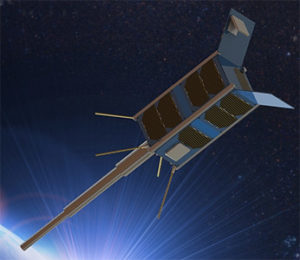
South Korean government agencies and universities have five payloads on board the upcoming SpaceX Falcon-9 launch from Vandenberg Air Force Base in California, United States. The launch is currently scheduled for 19 November 2018, and will loft approximately 60 satellites from numerous countries and companies.
The South Korean payloads come from governmental entities and from Seoul National University, and are as follows:
VisionCube-1 is a 2U CubeSat designed and built by the Korean Aerospace University and its mission is to obtain images of Transient Luminous Events in the upper atmosphere. To this purpose, the satellite will be put in a sun synchronous orbit at an altitude of 575 kilometers and an inclination of 97.69 degrees. VisionCube-1 will obtain images of Transient Luminous Events from its onboard payload.
The image processing payload consists of a multi-anode photon multiplier tube (MaPMT), a camera, and a real-time image processing engine built by using SoC (System-on-Chip) FPGA technologies. When the satellite passes over South Korea, it will receive commands from its ground station via the VHF band and it will the transmit mission data via the UHF band.
K2SAT is designed and built by the Republic of Korea Air Force Academy in cooperation with Chosun University and the Korean Advanced Institute of Science and Technology (KAIST), and is a 3U CubeSat that will demonstrate satellite imaging, data transfer, and voice repeating capabilities built by cadets and faculty. K2SAT will carry a camera; voice repeater consisting of a V/U transceiver with a 9k6 BSPK AX25 downlink for data and telemetry, and will also be capable of providing a single channel FM voice transponder; and a 2 Mbit QPSK downlink on the S-band.
Seoul National University Satellite-2 (SNUSAT-2) is a 3U CubeSat designed and built by the Seoul National University for early point of interest scanning for disaster monitoring using wide angle and high resolution cameras, and will also test a star tracker and Earth sensor developed in-house.
SNUGLITE is a 2U CubeSat also designed and built by the Seoul National University for technology demonstrations and amateur radio communication. The SNUGLITE mission includes a payload for amateur radio communication training. Sends beacon signals using UHF band with GMSK modulation. Earth stations that have capability of receiving S-band will be able to receive S-band signals; technology demonstration of an in-house developed dual frequency GPS receiver; and technology demonstration of measuring TEC and magnetic field using dual frequency GPS receiver and fine magnetometer with a boom.
Lastly, NEXTSat-1 is a multi-purpose microsatellite designed and developed at SaTReC (Satellite Technology Research Center) of Korea Advanced Institute of Science and Technology (KAIST).
The satellite, developed by KAIST from 2012-2017, will orbit the Earth for the next two years to measures space radiation and observe stars’ infrared rays, the South Korean Ministry of Science and Information Communications Technology said in a press release.





